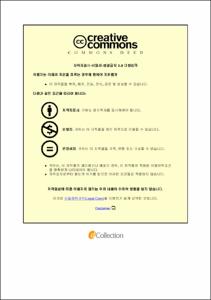신발 제조 공정의 생산성 및 품질 향상을 위한 설비 운영 전략에 관한 연구
- Abstract
- This study addresses managerial solution approaches for productivity improvement in footwear manufacturing systems. Our work focuses on two approaches, operational control strategies and facility optimization. The shoes are made by assembling bottom parts and upper parts on an assembly line. Before assembly processes, the upper parts of the shoes are manually sewed while bottom parts are produced by machines such as injection and molding machines. The manual operations for the upper parts lead to a large variability in processing times, resulting in higher work-in-process inventory. In most current footwear industries, production lines have been controlled by MRP-based push systems. Some industries attempt to introduce kanban-based pull systems. This dissertation identifies the characteristics of the footwear manufacturing processes, and discusses the problems of the current control systems. As an operational alternative, a CONWIP-based control strategy is presented. Simulation experiments are performed to examine the performance of the control strategies.
For facility optimization approach, we take outsole rubber fabrication, a critical process in a bottom parts of the shoes, as our test bed. The outsole rubbers are made from the rubber pellets which are formed by metal cutters. Here, the shape of the cutter must be designed so as to reduce the maximum stress applied to the cutter. We design a variety of cutter shapes and use computer simulations to analyze the maximum
stress in the rotary cutter for each design. A Taguchi method is used to identify the robust condition of the cutter. In L18 orthogonal array, the control factors such as knife width, twisted angle, number of knives, diameter, knife depth and supported angle are considered and noise factors like assembly tolerance and amount of antifriction are allocated in the outer array. It is found that the supported angle and diameter of the cutter are the most important factors to reduce maximum stress in the cutter.
Productivity has been mainly dependent on workers’ experience in footwear manufacturing systems. This study will be able to identify the problem of the existing footwear factory operation method numerically through the academic background and make a scientific approach to the productivity improvement. In terms of operational control strategies, this study can help to choose proper method between pull and push systems according to the situation of the factory. When new equipment is developed, it will be possible to shorten R&D period and make more reliable machine.
- Issued Date
- 2017
- Awarded Date
- 2017. 8
- Type
- Dissertation
- Publisher
- 부경대학교
- Alternative Author(s)
- A study on facility operation strategy for quality and productivity improvement in the footwear manufacturing process
- Affiliation
- 부경대학교 대학원
- Department
- 대학원 기술경영협동과정
- Advisor
- 구평회
- Table Of Contents
- Ⅰ. 서 론 1
1.1 연구배경 및 목적 1
1.2 연구내용 및 범위 2
1.3 논문의 구성 5
Ⅱ. 문제 기술 및 선행 연구 6
2.1 현 신발 제조 공정 특징 및 문제점 6
가. 일반적인 생산시스템 운영 방식 및 특징 6
(1) 푸쉬 생산 방식 6
(2) 풀 생산 방식 7
(3) 푸쉬와 풀의 주요 차이점 10
나. 현 신발 공장의 운영상 특징 11
(1) 예측이 힘든 주문 생산 11
(2) 다품종 소량 생산 제품이 많아지는 추세 14
(3) 발주처로부터의 적시 생산 요구가 커짐 16
(4) 갑피 공정과 밑창 공정의 특성이 상이 17
다. 현 생산 공장설비의 특징과 생산성 향상 접근 방법 18
(1) 다구찌 품질 공학 19
(2) 다구찌 기법의 적용 분야 19
(가) 연구 분야 19
(나) 설계 개발 단계 20
(3) 다구찌 기법의 적용 순서 20
(가) 특성치 파악 및 손실함수 적용 20
(나) 인자 분류 및 선정 22
(다) 직교배열법 활용 및 실험 배치 23
2.2 선행연구 분석 24
가. 생산운영관리에 관한 방식 24
나. 신발 제조 연구 분야 27
Ⅲ. 대상 시스템 및 새로운 운영 전략 30
3.1 대상 공정 설명 30
3.2 Stitching 공정 현상 분석 및 문제점 파악 34
가. 작업 지시 부재 39
나. 실적 파악의 어려움 43
다. WIP 통제 불가능 43
3.3 새로운 운영 전략의 도입 45
가. 풀 생산시스템 도입의 필요 45
나. CONWIP을 적용한 새로운 운영 전략 45
다. 새로운 전략 적용 시 기대 효과 49
(1) 제조비 절감 49
(2) 변동성 저감 50
(3) 품질 개선 51
3.4 해당 공정의 시뮬레이션 실험 분석 51
가. 시뮬레이션 실험 설계 51
나. 운영전략별 생산성 평가 56
(1) Push 방식의 생산성 평가 56
(2) Kanban 방식의 생산성 평가 57
(3) CONWIP 방식의 생산성 평가 59
3.5 생산시간의 변동성에 따른 운영전략별 생산성 65
가. 산출량 67
나. 싸이클 타임 68
다. WIP 70
라. 시스템의 효율성 비교 71
(1) 산출량 대비 싸이클 타임 비교 71
(2) 산출량 대비 WIP 수준 비교 73
마. 생산성 향상 효과 74
Ⅳ. 설비측면 생산성 향상 방안 사례 연구 76
4.1 신발 생산 시스템 76
가. 신발 생산 공정 소개 76
나. 펠렛 제조기 개념 설계 84
4.2 공정 최적화 86
가. 다구찌 방법 86
나. 파라미터 설계 사례 88
다. 사례 검토 및 의의 103
Ⅴ. 결론 109
5.1 연구 결과 110
가. 운영 측면 110
나. 설비 측면 111
5.2 향후 연구 방향 112
가. 운영 측면 112
(1) 현 공장의 생산성에 대한 평가 113
(2) 현재 공장 설비로 생산성을 얼마까지 올릴 수 있
는가 파악 113
(3) 현재 설비에서의 적정 WIP 파악 114
(4) 신규 공장이나 설비의 적정 배치 파악 114
나. 설비 측면 116
참고 문헌 119
- Degree
- Doctor
- Files in This Item:
-
-
Download
 신발 제조 공정의 생산성 및 품질 향상을 위한 설비 운영 전략에 관한 연구.pdf
기타 데이터 / 2.58 MB / Adobe PDF
신발 제조 공정의 생산성 및 품질 향상을 위한 설비 운영 전략에 관한 연구.pdf
기타 데이터 / 2.58 MB / Adobe PDF
-
Items in Repository are protected by copyright, with all rights reserved, unless otherwise indicated.